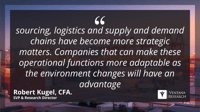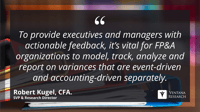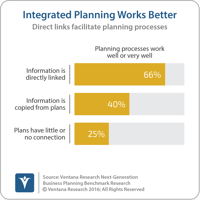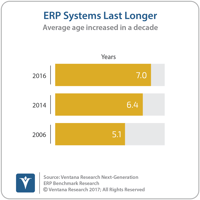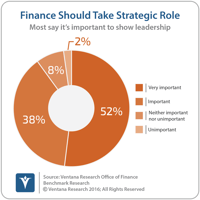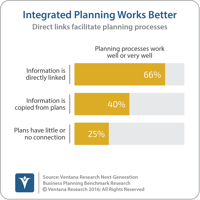We’re in a new era of trade, the result of converging issues that have been building for at least a decade. Structurally and politically, the liberal ethos that drove the trade environment through the second half of the 20th century and into the 21st has changed. There will be a new equilibrium in the future; getting there, though, will be a bumpy ride. Adding to the challenges posed by a shifting trade environment are commodity and currency market volatility and the impacts of ongoing legal,...
Read More
Topics:
Office of Finance,
Recurring Revenue,
Continuous Planning,
Financial Performance Management,
Price and Revenue Management,
Inventory Optimization,
Operations & Supply Chain,
Enterprise Resource Planning,
Sales and Operations Planning,
ERP and Continuous Accounting,
Sales Planning and Analytics,
revenue recognition
New rules governing revenue recognition for contracts have gone into effect for larger companies and are about to go into effect for smaller ones. The Financial Accounting Standards Board (FASB), which administers Generally Accepted Accounting Principles in the U.S. (US-GAAP), has issued ASC 606 and the International Accounting Standards Board (IASB), which administers International Financial Reporting Standards (IFRS) used in most other countries, has issued IFRS 15. The two standards are very...
Read More
Topics:
Office of Finance,
Recurring Revenue,
Continuous Planning,
Sales Performance Management,
Financial Performance Management,
ERP and Continuous Accounting,
Sales Planning and Analytics,
Billing and Recurring Revenue,
revenue recognition
“Straight-through processing” (STP) is a business process and data architecture methodology. Technology advances have made STP increasingly feasible for any business process, allowing companies to design and execute them from inception to completion in a more automated fashion, minimizing or eliminating human intervention in the process. The associated data also progresses automatically end-to-end through the process, preserving its integrity. Because there is no human intervention, data is...
Read More
Topics:
Sales,
Customer Experience,
Office of Finance,
Recurring Revenue,
Data Governance,
Financial Performance Management,
Digital Commerce,
ERP and Continuous Accounting,
Billing and Recurring Revenue
Workiva recently introduced Wdata, a cloud facility for centralizing financial and non-financial information from multiple sources. It frees up time for finance organizations, especially financial planning and analysis (FP&A) groups, to explore conditions and trends in their business because they need to spend less of it gathering data and preparing it for analysis and reporting. Ventana Research recently awarded Workiva our Digital Innovation award for Wdata because of its transformative...
Read More
Topics:
Office of Finance,
Recurring Revenue,
Continuous Planning,
Data Governance,
Data Preparation,
Financial Performance Management,
Price and Revenue Management,
Enterprise Resource Planning,
ERP and Continuous Accounting,
Sales Planning and Analytics,
revenue recognition
FinancialForce offers cloud-based ERP and professional services automation (PSA) software. The company targets midsize and larger services companies, especially those that provide professional services (such as consultants or field service organizations), subscription-based or recurring revenue services. FinancialForce’s key point of differentiation is that it is built natively on the Salesforce platform. Thus, CRM data is already located on the same platform as accounting and back-office data...
Read More
Topics:
Sales,
Office of Finance,
Recurring Revenue,
Cloud Computing,
Financial Performance Management,
ERP and Continuous Accounting,
Billing and Recurring Revenue,
revenue recognition
This year’s Workday Rising, the company’s annual user group meeting, offered details of the company’s latest release, Workday 31, and provided a roadmap for the next several semiannual releases. To put these plans into a broader context, I’ve commented before that information technology is on the verge of delivering capabilities that will enable finance and accounting organizations to transform how they work. Technology will have a more profound impact on accounting and finance over the coming...
Read More
Topics:
Office of Finance,
Recurring Revenue,
Continuous Planning,
Financial Performance Management,
Price and Revenue Management,
ERP and Continuous Accounting,
revenue recognition
OneStream XF from OneStream is a financial performance management (FPM) platform offering planning, budgeting and forecasting, statutory consolidations and reporting. The company was founded in 2010 and has been self-funded, which means that until recently its marketing and brand recognition efforts have been limited. I reviewed the company’s statutory consolidation capabilities earlier this year.
Read More
Topics:
Office of Finance,
Recurring Revenue,
Continuous Planning,
Financial Performance Management,
ERP and Continuous Accounting
Oracle OpenWorld is a fall event that sprawls over a lot of territory – figuratively in terms of the IT landscape and, if you’re in San Francisco, literally. My focus here is on the ERP portion of the company’s software portfolio.
Read More
Topics:
Office of Finance,
Recurring Revenue,
Cloud Computing,
asc 606,
Enterprise Resource Planning,
ERP and Continuous Accounting,
revenue recognition
Sage Intacct recently held its annual user group meeting. The cloud financial management software service provider targets rapidly growing small- and midsize services companies. Within this broad category, Sage Intacct focuses on verticals including software, financial services, healthcare, nonprofits, wholesale and franchisers.
Read More
Topics:
Office of Finance,
Recurring Revenue,
Cloud Computing,
asc 606,
Enterprise Resource Planning,
ERP and Continuous Accounting,
revenue recognition
Longview recently completed the acquisition of Tidemark Systems, a planning software vendor. Longview Plan powered by Tidemark is a suite of cloud-based applications that enable corporations to plan, assess performance and communicate results more effectively. The software facilitates what Ventana Research calls “continuous planning.” This is a highly collaborative, action-oriented approach to planning that relies on frequent, short cycles to rapidly create and update integrated company-wide...
Read More
Topics:
Mobile,
Office of Finance,
Recurring Revenue,
Continuous Planning,
Analytics,
Business Intelligence,
Financial Performance Management,
Price and Revenue Management,
ERP and Continuous Accounting,
Sales Planning and Analytics
